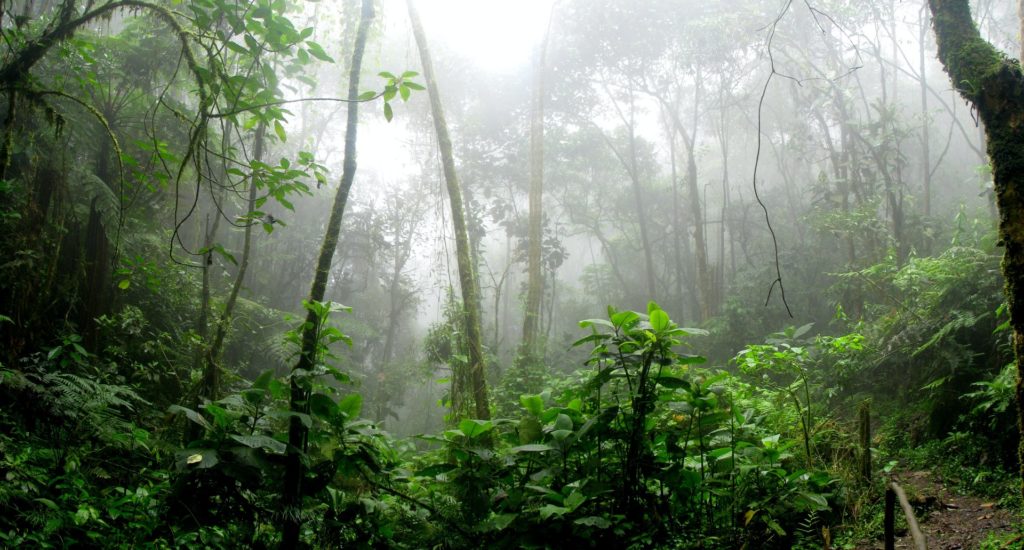‘Lease agreement’ approach to carbon offset markets could help save tropical forests

A new way to price carbon credits could encourage investment in forest preservation and boost progress towards net zero.
Current methods to value the carbon storage potential for forest conservation projects have led to a crisis of confidence in carbon markets, with recent research revealing as little as 6% of carbon credits from voluntary REDD+ schemes result in preserved forests.
This is hampering efforts to offset unavoidable carbon footprints, mitigate climate change, and scale up urgently needed investment in tropical forest conservation.
Now, a team led by the University of Cambridge including researchers from the University of Exeter and London School of Economics, has invented a more reliable and transparent way of estimating the benefit of carbon stored because of forest conservation.
Their new approach, published in the journal Nature Climate Change, works like a lease agreement: carbon credits are issued to tropical forest projects that store carbon for a predicted amount of time with the valuation front-loaded, because more trees protected now means less carbon released to the atmosphere straight away.
The technique involves deliberately pessimistic predictions of when stored carbon might be released, so that the number of credits issued is conservative. But because forests can now be monitored by remote sensing, if projects do better than predicted – which they usually will – they can be rewarded through the issue of further credits.
The payments encourage local people to protect forests: the carbon finance they receive can help provide alternative livelihoods that don’t involve cutting down trees.
And by allowing for future payments, the new method generates incentives for safeguarding forests long after credits have been issued. This contrasts with the current approach, which passes on a burden for conservation to future generations without compensation for lost livelihoods.
The approach also allows different types of conservation projects to be compared in a like-for-like manner.
“Until now there hasn’t been a satisfactory way of directly comparing technological solutions with nature-based solutions for carbon capture. This has caused a lack of enthusiasm for investing in carbon credits linked to tropical forest protection,” said Dr Tom Swinfield from the University of Cambridge’s Department of Zoology.
He added: “Tropical forests are being cleared so quickly that if we don’t protect them now, we’re not going to make the vital progress we need towards net-zero. Buying carbon credits linked to their protection is one of the best ways to do this.”
Tropical forests play a key role in taking carbon dioxide out of the atmosphere, helping to reduce global warming and avert climate catastrophe. But the carbon they capture is not taken out of the atmosphere permanently: forests can be destroyed by pests, floods, fire, wind – and by human clearance.
This impermanence, and therefore the difficulty of reliably measuring the long-term climate benefit of tropical forest protection, has made it an unattractive proposition for investors wanting to offset their carbon emissions.
And this is despite it being a far cheaper investment than more permanent, technology-based methods of carbon capture and storage.
Protection of tropical forests, a nature-based solution to climate change, comes with additional benefits: helping to conserve biodiversity, and supporting the livelihoods of people living near the forests.
Professor Ben Groom, Dragon Capital Chair in Biodiversity Economics at the University of Exeter Business School, said: “Investors face trade-offs when deciding which offsets to buy. Well-designed nature-based solutions projects present singular opportunities for benefitting biodiversity and rural livelihoods and while these schemes may be more vulnerable to impermanence than some other offset classes, they mitigate the social costs of climate change considerably.
“Our new approach suggests how this contribution can be valued, enabling the direct comparison of nature-based and technological offset options for progressing towards net zero.”
The new method is called ‘Permanent Additional Carbon Tonne’ (PACT) accounting, and can be used to value a wide range of nature-based solutions.
“Carbon finance is a way for us – the carbon emitters of the richer world – to direct funds towards rural communities in the tropics so they can get more out of the land they have, without cutting down more trees,” said Professor Andrew Balmford, Professor of Conservation Science at the University of Cambridge.
Co-author Professor Srinivasan Keshav from the University of Cambridge added: “Our new approach has the potential to address market concerns around nature-based solutions to carbon offsetting, and lead to desperately needed investment.”
Realising the social value of impermanent carbon credits is published in Nature Climate Change.



